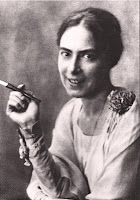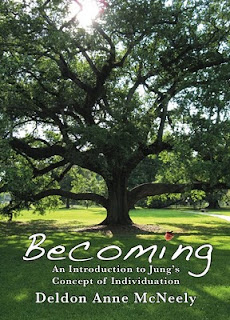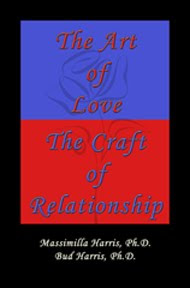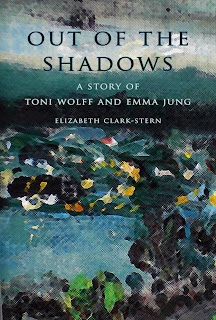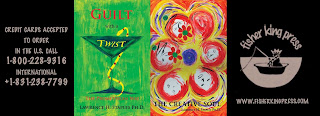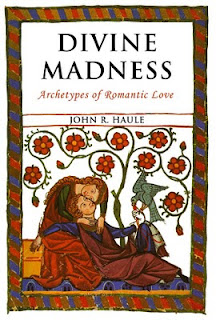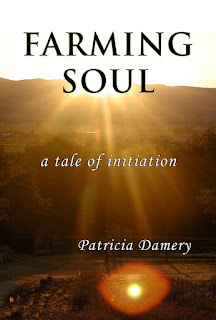Interviewed on his 90th birthday, Nelson Mandela, the South African political leader who led the fight against apartheid, was asked if he regretted not having spent more time with his family during his lifetime. He thought for a while and replied, “No, I had to do what was necessary for my soul.” (Interview, British Broadcasting Corporation, June, 2008.)
C.G. Jung was clear about the fact that he was proposing individuation from the standpoint of a Western European cultural lens, and he did not mean to apply it to other cultures. And even as the world has become smaller, we Jungians recognize that our precise notions about individuation cannot be applied to all cultures without significant reworking. Yet it is possible that, since the concept applies to human consciousness, it might be adapted to describe the expansion of consciousness in whatever form is available in any given culture. This is an aspect of the concept that needs more research.
In the Western European and American tradition, a commonly desired characteristic of individuation is the capability of persons to leave their parental home and make their way as independent individuals in a home separate from the family of origin. Naturally, geographical distance from the family is not what Jung meant by individuation. We may put miles between us and still stay emotionally dependent on each other. But being true to our values often means changing our profession, religion, politics, or attitudes to something entirely different from what was expected of us in our family.
In some cultures that kind of independence is discouraged, because one’s first duty is to help preserve the welfare of the family of origin, to stay with the family, clan, or tribe and contribute to the well-being of the group. Survival demands it. This describes the Pakistani woman (mentioned in a section of Becoming) who could not oppose her tribal requirement of arranged marriage. (This is so common in Britain that they have enacted a “Forced Marriage Act” to protect women.) Loyalty is also highly valued in cultures that have experienced genocide, as have Native-Americans, Jews, Kurds, and minority groups in many countries.
In spite of family prohibitions, some individuals are capable of seeing beyond their environmental restrictions, even when they do not choose to openly oppose them. Some can and do make contact with a wider consciousness and use their dreams, creative abilities, and ambitions to compromise with the conscious situation. They may become prominent as spokespersons, leaders, or advocates for others, or they may express their advanced consciousness as introversion through art, healing, and ways of wisdom. As long as the possibility of thinking for oneself is available, individuation can proceed, as Mandela’s statement illustrates. But it may look different in different cultures, including some parts of the USA and Western Europe.
Actually, contemporary trends in psychoanalysis have moved more and more toward encouraging community, a generous and open-spirited attitude toward others and toward nature, and a support for flexibility-oriented, rather than goal-oriented, individuation. These values are easier to express in parts of the world that haven’t been entrenched in authoritarian values.
In general, Native-Americans’ process of individuation appears different from that of European-Americans. Because of their experience of the near extinction of their culture, many Native-Americans expect to adhere closely to the traditions of their nations. They value the continuation of those values and rituals which connect them to their heritage, although they may feel encouraged to leave their culture to experience and learn the ways of the larger society. Often Native-Americans become active politically in order to promote the good of their people and contribute to the development of their nations. This is not to imply that they do not also identify themselves as Americans, as illustrated by their participation in military combat and national politics.
An intellectual dilemma brought about through the mind-body split, begun with Plato and thoroughly developed by Descartes, had an impact on Western minds through the Enlightenment. This split with the world of nature was not suffered by non-Europeans such as Native American, African, and Asian cultures, and the differences are apparent in attitudes toward matter and nature to this day.
Jungian psychoanalyst Jerome Bernstein, who has worked for years with the Navajo Native-Americans, believes that the Western ego takes its form and dynamic structure at the price of its separation from nature. Thus, individuation as Jung formulated it has a lot to do with reconnecting to that dimension of the transpersonal, the objective psyche, or Self as nature.
Says Bernstein:
As I see it, much of what the individuation process aims at is the starting point for the (traditionally rooted) Navajo. Much of the connection that the Western individuation process aims at is where they begin—albeit with a different ego structure than the Western ego. There is no separation from nature, no differentiation between mind and body, between the ego and the sacred. (Bernstein, private communication.)
It seems safe to say that an individual can proceed with a strong sense of community and loyalty to the collective without losing one’s individuality. Bernstein has written extensively about the split between humans and nature that is so prevalent in our society and the difficulty encountered by people who are sensitive to that split in his book, Living in the Borderland: The Evolution of Human Consciousness and the Challenge of Healing Trauma.
In the United States we are expected to ignore a heavy-handed approach to environmental problems, an approach that assumes an attitude of domination and greed instead of conservation and care. Those who feel empathy with nature and distress about the destruction are often dismissed as abnormally sensitive, and they are misunderstood and marginalized. Actually, like canaries in the mine, many are more realistic about consequences than those in denial of the destruction, and they have important information if we could only listen.
Values that were assumed by our culture to be universal fifty years ago now seem terribly biased. Colonialism viewed culture through the eyes of the colonists and distorted the nature of the colonized, at great cost to the colonized and to humanity itself. European and American countries applied their values to African and Asian cultures with little consideration of history. Corporations saw the value of their commercial goods through their vision, which did not benefit their customers or the environment. Men made laws which did not consider the welfare of women, and women promoted customs which did not fit the needs of men. We are all being shown the possibility of seeing through the eyes of others, seeing from another angle, seeing from a larger vantage point.
We cannot undo the damage, cannot restore the broken communities and ecosystems, cannot revive the victims of genocide who have had their ways of life annihilated. What we can do is stop imposing and judging, and start to wait, listen, and respect the habits and philosophies of people with different values.
 Jung emphasized “uniting the opposites” in becoming a whole person. He meant that we come to see nuances, rather than engaging in black and white thinking. We are less rigid about what is good or bad, or what constitutes masculine or feminine traits, less occupied with separating human and nature. In Native-American pre-colonial philosophy there has been no separation to be overcome between ego and nature, between human life and animal life, between the welfare of the person and the welfare of humankind. Until recent years our government has systematically silenced and tried to eradicate the Native-Americans’ capacity to articulate their philosophy. Now some leaders see that there was wisdom in the attitudes of native peoples toward nature that we would not allow, but which was valuable. This has happened in other parts of the world as well, such as Australia. There the prime minister recently made a sincere and very moving public apology to the indigenous people for the way they had been treated by their colonizing government. Many of the political problems in the Middle East are a result of misunderstanding the values of people whose allegiance has been to their tribal identities for generations. . .
Jung emphasized “uniting the opposites” in becoming a whole person. He meant that we come to see nuances, rather than engaging in black and white thinking. We are less rigid about what is good or bad, or what constitutes masculine or feminine traits, less occupied with separating human and nature. In Native-American pre-colonial philosophy there has been no separation to be overcome between ego and nature, between human life and animal life, between the welfare of the person and the welfare of humankind. Until recent years our government has systematically silenced and tried to eradicate the Native-Americans’ capacity to articulate their philosophy. Now some leaders see that there was wisdom in the attitudes of native peoples toward nature that we would not allow, but which was valuable. This has happened in other parts of the world as well, such as Australia. There the prime minister recently made a sincere and very moving public apology to the indigenous people for the way they had been treated by their colonizing government. Many of the political problems in the Middle East are a result of misunderstanding the values of people whose allegiance has been to their tribal identities for generations. . .About the Author
Deldon Anne McNeely received her Ph.D. in Clinical Psychology from Louisiana State University and is a member of the International Association for Analytical Psychology. A senior analyst of the Inter-Regional Society of Jungian Analysts, she is a training analyst for their New Orleans Jungian Seminar. Publications include Touching: Body Therapy and Depth Psychology

Fisher King Press publishes of an eclectic mix of worthy books including Jungian Psychological Perspectives, Cutting Edge Fiction, and a growing list of alternative titles.
- We Ship Worldwide.
- Credit Cards Accepted.
- Phone Orders Welcomed. 1-800-228-9316 toll free in the US & Canada. International +1-831-238-7799. skype: fisher_king_press


